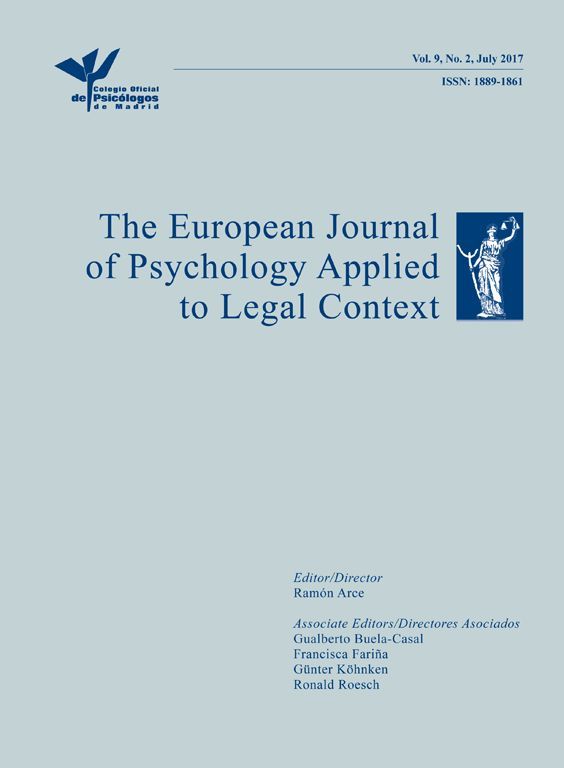Corresponding autor at: Department of Social Psychology. University of Valencia. Avda. Blasco Ibáñez, 21. 46010 Valencia. Spain.
was read the article
| Year/Month | Html | Total | |
|---|---|---|---|
| 2025 April | 0 | 1 | 1 |
| 2025 March | 30 | 3 | 33 |
| 2025 February | 31 | 4 | 35 |
| 2025 January | 20 | 4 | 24 |
| 2024 December | 23 | 3 | 26 |
| 2024 November | 22 | 3 | 25 |
| 2024 October | 15 | 6 | 21 |
| 2024 September | 26 | 5 | 31 |
| 2024 August | 35 | 3 | 38 |
| 2024 July | 33 | 1 | 34 |
| 2024 June | 44 | 2 | 46 |
| 2024 May | 25 | 8 | 33 |
| 2024 April | 44 | 4 | 48 |
| 2024 March | 29 | 9 | 38 |
| 2024 February | 29 | 3 | 32 |
| 2024 January | 28 | 5 | 33 |
| 2023 December | 30 | 13 | 43 |
| 2023 November | 23 | 5 | 28 |
| 2023 October | 32 | 7 | 39 |
| 2023 September | 31 | 7 | 38 |
| 2023 August | 26 | 4 | 30 |
| 2023 July | 23 | 4 | 27 |
| 2023 June | 19 | 5 | 24 |
| 2023 May | 60 | 5 | 65 |
| 2023 April | 56 | 7 | 63 |
| 2023 March | 40 | 13 | 53 |
| 2023 February | 23 | 3 | 26 |
| 2023 January | 21 | 8 | 29 |
| 2022 December | 23 | 4 | 27 |
| 2022 November | 31 | 8 | 39 |
| 2022 October | 16 | 9 | 25 |
| 2022 September | 26 | 11 | 37 |
| 2022 August | 17 | 8 | 25 |
| 2022 July | 15 | 13 | 28 |
| 2022 June | 37 | 16 | 53 |
| 2022 May | 24 | 12 | 36 |
| 2022 April | 31 | 9 | 40 |
| 2022 March | 30 | 17 | 47 |
| 2022 February | 30 | 5 | 35 |
| 2022 January | 44 | 14 | 58 |
| 2021 December | 28 | 13 | 41 |
| 2021 November | 15 | 18 | 33 |
| 2021 October | 19 | 17 | 36 |
| 2021 September | 13 | 16 | 29 |
| 2021 August | 17 | 8 | 25 |
| 2021 July | 7 | 15 | 22 |
| 2021 June | 16 | 5 | 21 |
| 2021 May | 12 | 9 | 21 |
| 2021 April | 48 | 15 | 63 |
| 2021 March | 19 | 10 | 29 |
| 2021 February | 25 | 5 | 30 |
| 2021 January | 25 | 11 | 36 |
| 2020 December | 18 | 6 | 24 |
| 2020 November | 16 | 8 | 24 |
| 2020 October | 26 | 2 | 28 |
| 2020 September | 22 | 9 | 31 |
| 2020 August | 14 | 4 | 18 |
| 2020 July | 13 | 3 | 16 |
| 2020 June | 21 | 3 | 24 |
| 2020 May | 31 | 12 | 43 |
| 2020 April | 24 | 7 | 31 |
| 2020 March | 81 | 10 | 91 |
| 2020 February | 48 | 3 | 51 |
| 2020 January | 49 | 7 | 56 |
| 2019 December | 37 | 10 | 47 |
| 2019 November | 13 | 8 | 21 |
| 2019 October | 25 | 8 | 33 |
| 2019 September | 13 | 12 | 25 |
| 2019 August | 14 | 3 | 17 |
| 2019 July | 15 | 14 | 29 |
| 2019 June | 25 | 20 | 45 |
| 2019 May | 98 | 31 | 129 |
| 2019 April | 196 | 35 | 231 |
| 2019 March | 221 | 34 | 255 |
| 2019 February | 142 | 37 | 179 |
| 2019 January | 127 | 32 | 159 |
| 2018 December | 131 | 25 | 156 |
| 2018 November | 125 | 18 | 143 |
| 2018 October | 139 | 15 | 154 |
| 2018 September | 85 | 11 | 96 |
| 2018 August | 64 | 18 | 82 |
| 2018 July | 37 | 16 | 53 |
| 2018 June | 91 | 22 | 113 |
| 2018 May | 52 | 24 | 76 |
| 2018 April | 100 | 27 | 127 |
| 2018 March | 139 | 31 | 170 |
| 2018 February | 108 | 34 | 142 |
| 2018 January | 158 | 24 | 182 |
| 2017 December | 59 | 19 | 78 |
| 2017 November | 64 | 21 | 85 |
| 2017 October | 70 | 21 | 91 |
| 2017 September | 60 | 30 | 90 |
| 2017 August | 83 | 31 | 114 |
| 2017 July | 80 | 45 | 125 |
| 2017 June | 58 | 37 | 95 |
| 2017 May | 0 | 18 | 18 |




